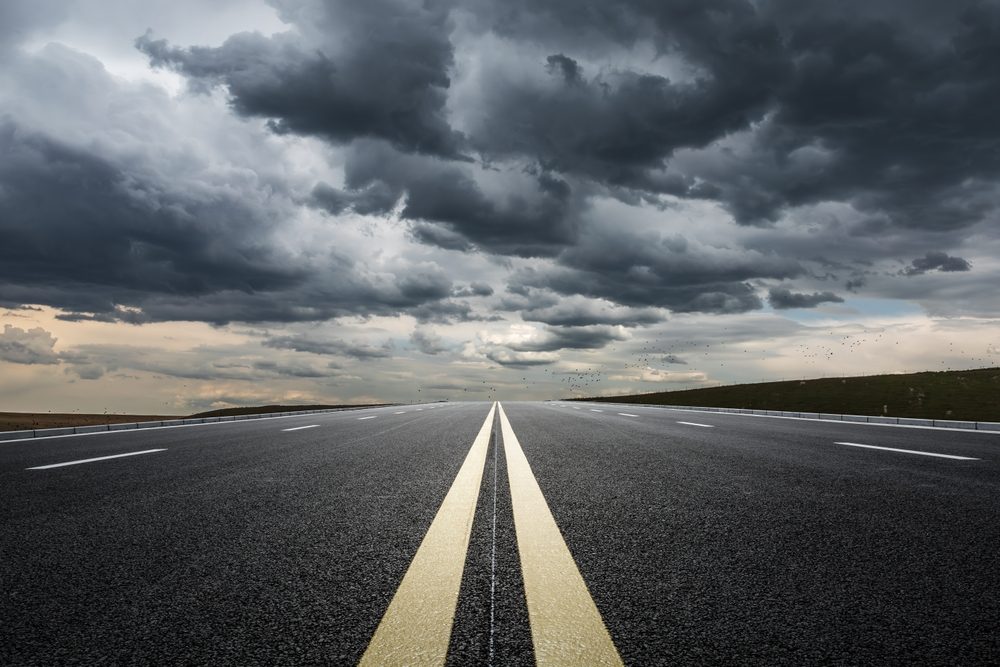Most Dangerous Roads and Intersections in San Bernardino
Crashes occur frequently throughout the city, from busy neighborhood intersections to the major highways that run through the Inland Empire.
Whether you’re commuting, heading to school, or traveling across town, certain routes pose a higher risk for serious collisions. Factors like traffic volume, speed, weather conditions, and limited visibility all play a role in roadway safety.
This guide highlights the most dangerous roads and intersections in San Bernardino, including high‑speed corridors and complex intersections where drivers should use extra caution. If you’ve been injured in a crash, a San Bernardino car accident lawyer can help you understand your rights and next steps as you focus on recovery.
Why Certain Roads in San Bernardino See More Crashes
San Bernardino’s location at the intersection of I‑10, I‑15, and State Route 210 makes it a high‑traffic hub for commuters, freight transport, and out‑of‑town travelers.
These highways connect directly to local streets that serve schools, government offices, and shopping centers, leading to a mix of heavy regional and local traffic throughout the city.
That combination increases the likelihood of crashes at key intersections and corridors. Citywide data shows higher-than-average crash activity at signalized intersections and on roadways with high-speed traffic, limited visibility, or confusing lane configurations.
In response to ongoing traffic safety concerns, San Bernardino developed a Local Roadway Safety Plan to address priority areas. Understanding which roads carry the highest crash risk can help you avoid danger and protect your passengers.
For a free legal consultation, call (424) 453-2310
What Makes a Dangerous Road Dangerous?
A road or intersection becomes higher‑risk when traffic volume, speed, roadway design, and driver behavior intersect in ways that make collisions more likely.
Several conditions in San Bernardino contribute to its injury‑crash burden:
- High traffic volume and congestion: As a regional connector, San Bernardino carries steady flows of interstate, state highway, and arterial traffic into areas with workplaces, schools, and shopping destinations. Heavy congestion increases the chances of rear‑end and side‑swipe crashes, especially when drivers change lanes abruptly or follow too closely.
- Speed and reduced visibility: Arterial intersections along E Street, Highland Avenue, and Baseline Street have wide lanes and long straight segments that may encourage speeding. Limited lighting at night or sun glare at certain times of day can reduce reaction time, leading to unsafe left turns and red‑light violations.
- Challenging intersection and merge design: Intersections with multiple turn lanes, closely spaced signals, or unclear lane markings can contribute to failure‑to‑yield crashes. Short merge zones, such as University Parkway at I‑215, may give drivers limited room to accelerate or merge safely, increasing the risk of rear‑end collisions.
- Mixed residential and commercial traffic patterns: Some high‑collision locations, like Date Street and Del Rosa Avenue, are in residential areas where parked vehicles narrow sightlines and drivers make frequent short trips. In contrast, intersections such as Waterman Avenue & Hospitality Lane sit in retail districts where vehicles are constantly entering and exiting parking lots, contributing to T‑bone and rear‑end crashes.
- Heavy trucks and construction impacts: Industrial corridors near Mount Vernon Avenue & 5th Street see regular truck traffic. Larger vehicles have longer stopping distances and wider blind spots, increasing collision risk when smaller vehicles merge or change lanes nearby. Construction zones on I‑215 and SR‑210 can create temporary lane shifts, narrowed lanes, and unpredictable slowdowns.
- Use of crash data to guide improvements: State and local agencies make collision data available through SWITRS and the TIMS platform. The City of San Bernardino’s Local Roadway Safety Plan uses this information to identify high‑risk locations and support upgrades such as dedicated turn lanes, pedestrian safety features, and improved signal timing.
High‑Risk Highways, Corridors and Interchanges
In addition to individual intersections, several full-length corridors and highway segments in and around San Bernardino pose elevated crash risks due to speed, elevation changes, freight volume, and weather.
- Bear Valley Road (County Route Corridor): This stretch of road includes hills, curves, and frequent local traffic. Sharp turns and limited passing zones can contribute to head‑on and run‑off‑the‑road crashes. Drivers should reduce speed before curves and maintain lane discipline, especially in wet or foggy weather.
- Interstate 215 (I‑215): I‑215 runs directly through San Bernardino and often carries a mix of commuter vehicles and heavy trucks. Merging traffic, lane changes, and periodic construction zones can lead to chain‑reaction or rear‑end collisions. Maintaining a safe following distance is especially important on this route.
- State Route 138 (SR‑138 / Pearblossom Highway): SR‑138 is known for winding two‑lane sections, steep grades, sharp curves, and variable winds. Passing opportunities are limited, and attempting to overtake slower vehicles can be risky. Slower speeds and defensive driving are recommended along these stretches.
- Interstate 15 (I‑15): Connecting Southern California and Las Vegas, I‑15 sees long‑distance travel, high speeds, and desert weather conditions. Fatigue, distracted driving, and high winds can affect vehicle control. Rest breaks, hydration, and speed awareness are key to safer travel on this corridor.
- Cajon Boulevard (Historic Route 66 Alignment): Cajon Boulevard runs parallel to portions of I‑15 and is sometimes used as an alternative route. It has narrow lanes, limited shoulders, and curves that require careful steering and speed management. Drivers should avoid passing and remain alert for oncoming traffic.
- E Street Corridor: E Street serves residential areas, business districts, and transit stops, creating frequent turns, crosswalk activity, and changing traffic speeds. Intersections such as E Street and Highland Avenue and E Street and 30th Street experience higher crash activity tied to red‑light running and limited nighttime visibility. Planned city improvements include pedestrian lighting, median barriers, and curb extensions.
- University Parkway / I‑215 Interchange: This interchange near California State University San Bernardino combines freeway ramps with high‑volume city traffic. Drivers sometimes merge across multiple lanes at high speeds, increasing the likelihood of rear‑end and side‑impact collisions. Staying in a designated lane longer before merging can reduce crash risk.
- Weather and Seasonal Conditions: Winter storms may create snow or ice on Cajon Pass and high‑elevation stretches of I‑15 and SR‑138, while summer storms can cause localized flooding on roads such as Baseline Street and Sierra Way. Checking weather conditions before driving can help reduce crash risk.
Click to contact our personal injury lawyers today
Common Dangerous Road and Intersection Factors and Prevention Tips
Certain behaviors and conditions make some intersections and corridors in San Bernardino more prone to accidents. These are among the most common contributors to crashes:
- Red–light violations: Drivers accelerating through yellow lights or running red signals put cross-traffic and pedestrians at risk. Always scan both directions before proceeding on a green.
- Unsafe left turns: Misjudging the speed or distance of oncoming vehicles often results in T-bone collisions. Wait for a clear gap or a protected green arrow before turning.
- Distracted driving: Using a phone, adjusting the navigation system, or talking to passengers takes your attention off the road. Eliminate distractions before starting your trip.
- Speeding: Higher speeds reduce your ability to stop in time and worsen crash severity. Follow posted limits and slow down in residential areas, near schools, and in work zones.
- Limited visibility: Sun glare, poor lighting, and obstructed views at intersections increase crash risk. Use headlights from dusk to dawn, keep your windshield clean, and approach intersections with caution.
- Short merge areas: Freeway ramps or surface streets with little room to accelerate can lead to rear-end crashes. Check mirrors, signal early, and adjust your speed to merge smoothly.
- Pedestrian and bicycle traffic: Areas near schools, transit stops, and downtown often have high foot and bike traffic. Yield to pedestrians in crosswalks, check for cyclists in bike lanes, and avoid overtaking vehicles stopped at crosswalks.
Driver Safety Tips for Preventing Collisions
You can reduce your risk of being involved in a crash by adopting safer driving habits:
- Cover your brake: Keep your foot lightly over the brake pedal when approaching intersections so you’re ready to stop quickly.
- Maintain following distance: Leave enough space between your vehicle and the one in front to allow for sudden stops or turns.
- Eliminate distractions: Turn off phone notifications, secure loose objects, and stay focused on the road.
- Expect other drivers to make mistakes: Always scan for potential hazards and anticipate unsafe maneuvers by others.
- Drive sober and alert: Never drive under the influence of drugs or alcohol. If you’re tired, pull over and rest or switch drivers if possible.
Complete a Free Case Evaluation form now
What To Do If You’re Hit on One of These Dangerous Roads
Crashes happen quickly, but the steps you take afterward can protect your health, support your claim, and preserve critical evidence.
Here’s what to do after a collision in California:
- Call 911 and seek medical care: Check for injuries and request emergency responders. California law requires you to report any crash involving injury or death. Even if symptoms are mild or delayed, get a medical evaluation; conditions like concussions or whiplash may not be immediately obvious.
- Document the scene: If it’s safe and you’re able, use your phone to photograph vehicle positions, visible damage, skid marks, debris, traffic signals, and any injuries. These images can be essential if there is a dispute about fault.
- Exchange information and speak with witnesses: Collect names, phone numbers, driver’s licenses, and insurance information from all involved drivers. If there are witnesses nearby, ask for their contact details and brief statements about what they saw.
- Preserve evidence: Traffic signal data, surveillance footage, and dash cam video may only be retained for 30 to 90 days. If a nearby business or intersection camera may have captured the crash, contact the owner quickly to request preservation. Keep damaged parts, clothing, and any other physical evidence.
- Avoid recorded statements: Insurance adjusters may ask you for a recorded statement soon after the crash. You are not required to give one, and doing so without legal guidance can affect your claim.
- Consult a personal injury lawyer: After addressing immediate medical needs, speak with an attorney who handles traffic injury claims. A lawyer can help obtain the police report, preserve evidence, communicate with insurers, and pursue financial compensation while you focus on recovery.
Call Our Law Firm: Free Crash Review
If you or someone close to you was injured on one of San Bernardino’s dangerous roads or highways, J&Y Law is here to help. You don’t have to go through the recovery and legal process alone.
We offer a free crash review to help you understand your rights and next steps. Whether your accident happened at a high-risk intersection, along a major corridor like I‑215 or Bear Valley Road, or on a local street, we’ll take the time to listen, assess your case, and explain your legal options.
San Bernardino’s roads present real risks. Defensive driving can help, but when crashes happen, J&Y Law is ready to stand by you. Contact us today to schedule your free crash review. We’ll advocate for you while you focus on healing.
Call or text (424) 453-2310 or complete a Free Case Evaluation form


